 One of the most significant factors that determines how, when, or even IF a trout feeds, is water temperature – at least with wild trout. Stocked trout are raised in hatcheries and fed every day, so they are used to eating every day. Water temperature can impact the way they feed but not nearly to the extent it does a wild trout.
One of the most significant factors that determines how, when, or even IF a trout feeds, is water temperature – at least with wild trout. Stocked trout are raised in hatcheries and fed every day, so they are used to eating every day. Water temperature can impact the way they feed but not nearly to the extent it does a wild trout.
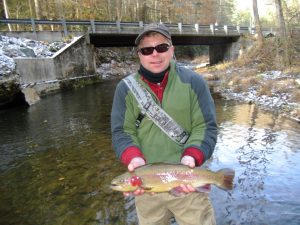
An ideal water temperature for a trout is in the upper 50’s to low 60’s. If you show up at the river, dunk your thermometer in the water, and get a reading of 60-degrees, chances are you’re going to have a pretty good day – assuming you do everything else right. On the other hand, if you do everything exactly right but the water temperature is 38-degrees, you may not even get a strike.
On a broader scale, I think of anything between 50 and 68-degrees to be reasonable. But there are variables. 52-degrees and falling due to a cold front may result in tough fishing. 48-degrees and rising due to a warm front may produce excellent fishing. Fish will probably be sluggish if it’s 68-degrees and rising in a summer drought. But 68-degrees and falling because of a summer rain may really turn them on.
With warmer temperatures, it’s more about the oxygen than anything. Trout need oxygenated water and typically, the warmer the water, the less oxygen. If water temperatures hit 75-degrees for more than a few days in a row, trout can’t survive. They’ll either search out more suitable conditions or die.
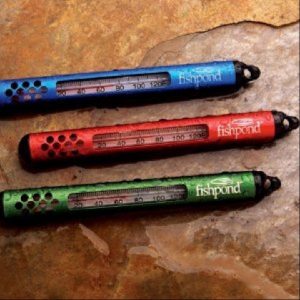
With excessively cold water, it’s more about metabolism. As a survival mechanism, their metabolism changes when water temperatures get extremely cold and they don’t require as much food. It’s similar to a bear during hibernation. So if you’ve ever tried to get me to take you fishing in the Smokies in January and I talked you out of it, that’s why. I have great gear and am not afraid of getting out in the cold, but the fish just wouldn’t be feeding.
On some extremely fertile rivers, this may not be the case. There may be enough food through the winter to keep the fish feeding. I know I’ve fished some excellent winter hatches in Montana. But the streams of the Smokies are the opposite of fertile. They’re some of the oldest mountains in the world and consequently very acidic and nutrient poor, which means there is just not a lot of food, especially in the winter.
There are a number of things that can influence water temperature, with air temperature being one of the most obvious. In the mountains, air temperature and consequently, water temperature can vary significantly by elevation. For instance, a river at 2000’ elevation may see an air temperature of 85-degrees in July with a water temperature of 68-degrees. But if you go to a stream at 3800’ elevation on that same July day, you may find an air temperature of 75-degrees and a water temperature of 61-degrees. That’s why I typically like to focus on high elevation streams in the middle of the summer.
Of course, the opposite is true early in the season. The high elevation streams may be too cold while the low elevation streams are starting to turn on. I once guided a local gentleman on a high elevation stream in July and we had a very productive day. He called me, frustrated, the following March. He said he’d just been to the same stream I took him to, did everything the same way, but didn’t even get a strike. In July, the water temperature had been 60-degrees on that stream. When he went back in early March, it had been closer to 40-degrees. It matters.
Tree canopy can also have a big impact on water temperature. A bigger, more open river may not be very productive on a late June afternoon. But a smaller, more heavily canopied stream at the exact same elevation might be very productive. It seems pretty obvious when you think about it, but the more direct sunlight that reaches a stream, the warmer the water is going to get.
Time of day is another big factor. A lot of people think you have to be on the water at the crack of dawn to catch fish, which is only sometimes true when you’re talking about stream trout. In the heat of the summer, very early and very late in the day are probably the times when you’ll find the most active fish, because you’re getting slightly cooler water temperatures. However, if you’re fishing in early March or late November, you’ll likely find more active fish in the middle of the day, when water temperatures are slightly warmer. That’s one of the reasons why our peak fishing seasons are in months like May or October. The temperatures are mild pretty much all day, and the fish are active pretty much all day.
This is all very specific to free flowing streams. Tailwaters are totally different animals all together. When a river is dammed to form a lake, they release water from the dam every day to control flooding and to generate electricity. The river that is formed below the dam from these releases is referred to as a tailwater.
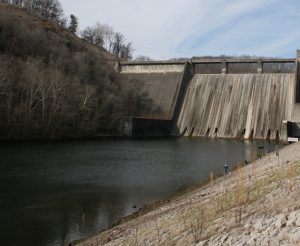
The water that they pull from the lake to form the tailwater comes from near the bottom of the lake. Because that water is so deep, it receives no sunlight and is basically insulated by all the water above it. So, the water that comes out of the dam is approximately 50-degrees, regardless of time of day, time of year, or air temperature, which is why that big, wide-open river can support trout. Spring Creeks are very similar because the water source is deep underground, insulated by earth.
How deep the lake is determines how much cold water “storage” it has. That and the volume and frequency of water releases determine how far down river the water stays cold. Your typical East Tennessee tailwater will maintain these temperatures, and support trout, for about 25 miles. So when it comes to tailwaters, you’re always going to have about the same water temperature, making them year round fisheries. With tailwaters, it’s mostly the timing and duration of the water releases that determine when, or even if you can go and how much success you’ll have.
Back to the mountains, water temperature is one of the things that I pay the most attention to when deciding when and where to fish. I’ve been doing this a long time so I just kind of know based on all of the conditions. Until you “just know,” a stream thermometer can be one the most valuable pieces of gear in your bag.

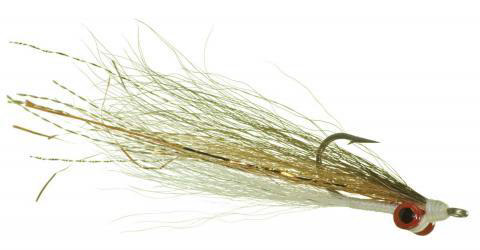 In freshwater or salt, one of the best baitfish patterns around…. I recently went to Perdido Key, FL on vacation. Once a year, my wife and I take a beach vacation somewhere, usually with another couple. And while these trips are more about relaxation and socializing, I always try to work in at least a little fishing, sometimes with a guide. I didn’t know much about this area and never really even took time to research, so I just packed some gear and planned to figure it out when I got there.
In freshwater or salt, one of the best baitfish patterns around…. I recently went to Perdido Key, FL on vacation. Once a year, my wife and I take a beach vacation somewhere, usually with another couple. And while these trips are more about relaxation and socializing, I always try to work in at least a little fishing, sometimes with a guide. I didn’t know much about this area and never really even took time to research, so I just packed some gear and planned to figure it out when I got there.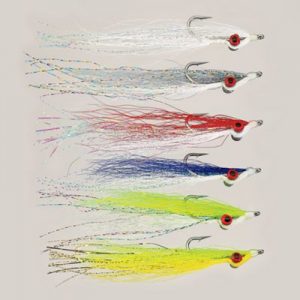
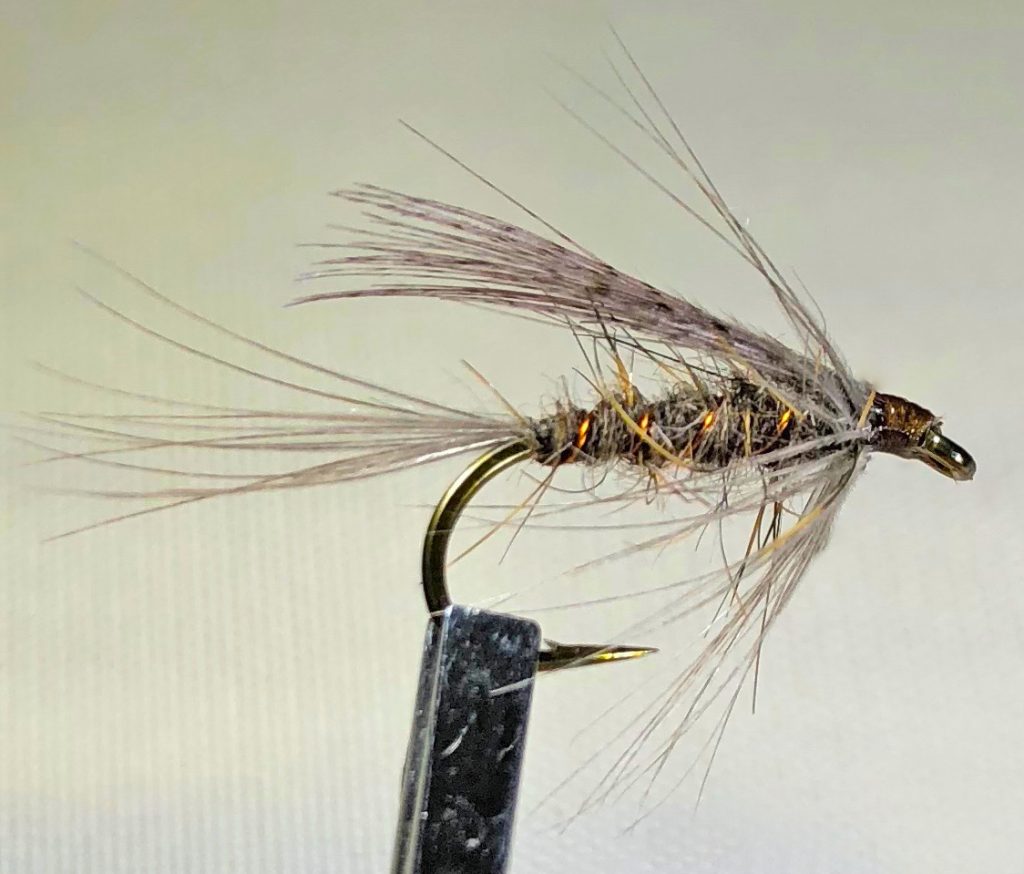
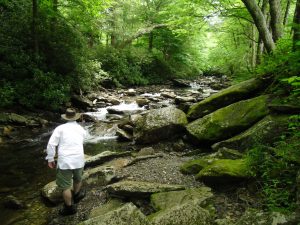
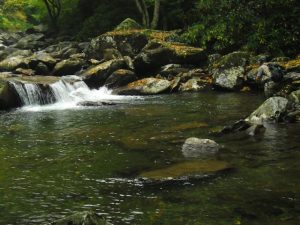
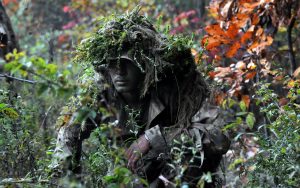
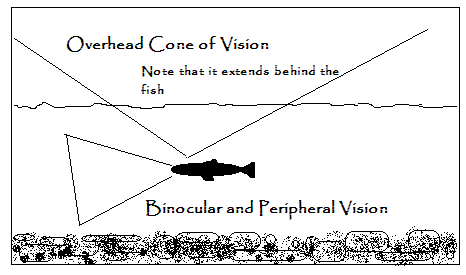
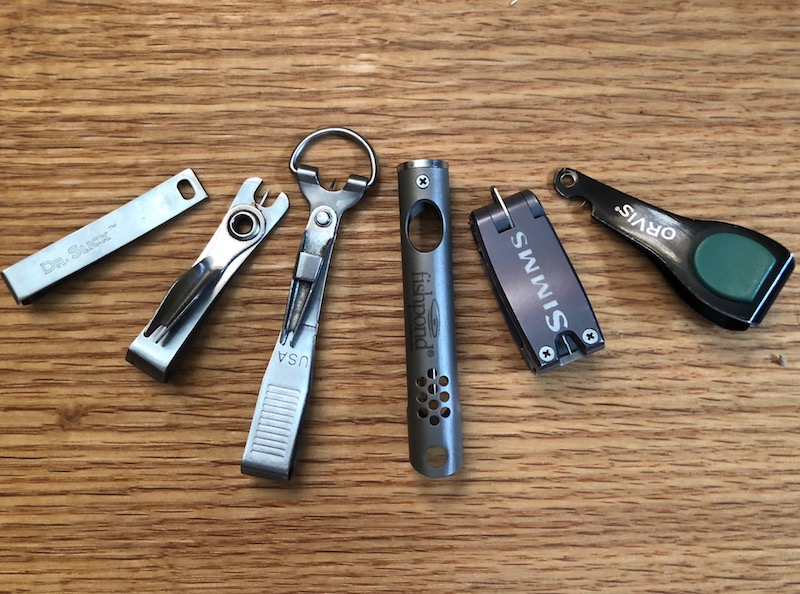
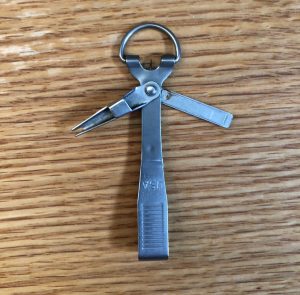 As with most any fly fishing product these days, there are seemingly endless nipper styles and features to suit your needs and tastes. Some are just shaped differently, boasting a better ergonomic design. Others are equipped with additional tools for tasks such as tying knots or sharpening hooks. And if you want to take it to the next level, check out this description of Abel’s nippers:
As with most any fly fishing product these days, there are seemingly endless nipper styles and features to suit your needs and tastes. Some are just shaped differently, boasting a better ergonomic design. Others are equipped with additional tools for tasks such as tying knots or sharpening hooks. And if you want to take it to the next level, check out this description of Abel’s nippers: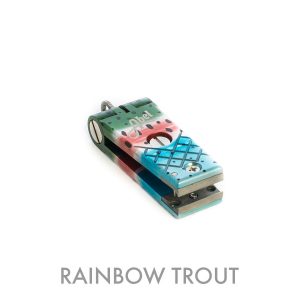 And they can be yours in black for a mere $85. For custom colors, they’re just $105. And with a cool fish print… a steal at $165. Yep, $165 for line cutters. All of a sudden, $10 for a pair of nippers doesn’t sound too bad, does it? As with anything else, if you have the disposable income and want to spend $165 of it on nippers, go ahead. I won’t judge you.
And they can be yours in black for a mere $85. For custom colors, they’re just $105. And with a cool fish print… a steal at $165. Yep, $165 for line cutters. All of a sudden, $10 for a pair of nippers doesn’t sound too bad, does it? As with anything else, if you have the disposable income and want to spend $165 of it on nippers, go ahead. I won’t judge you.